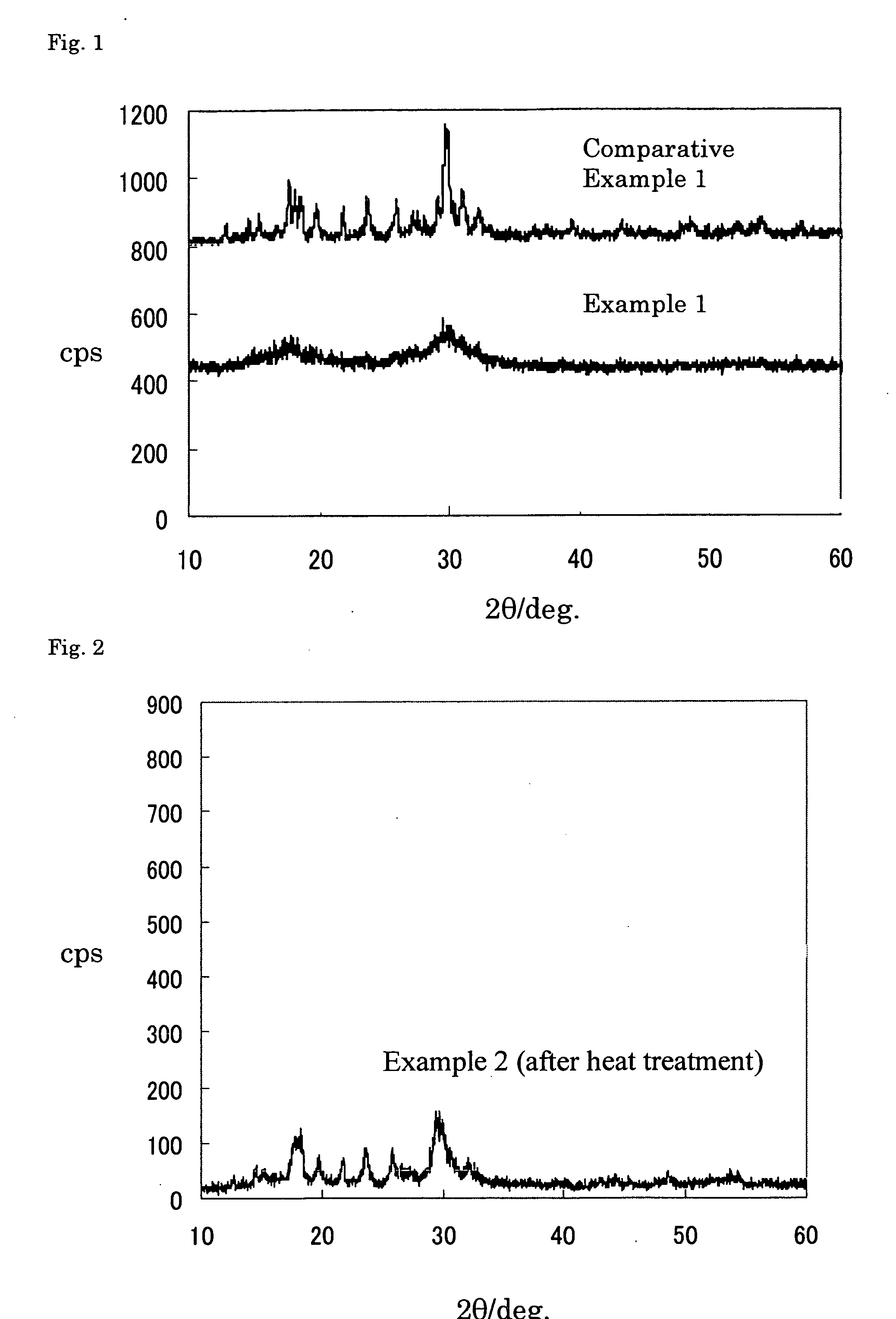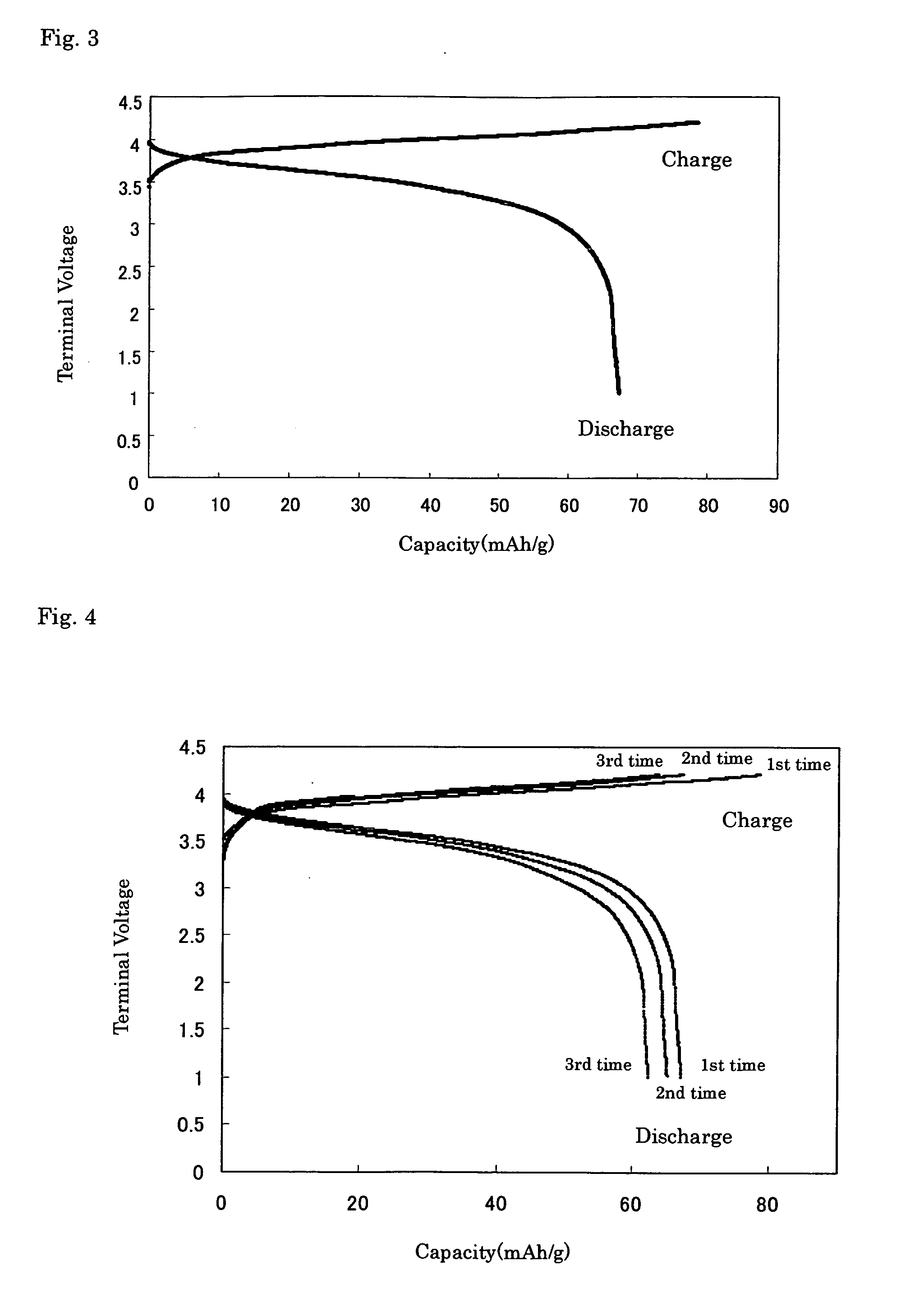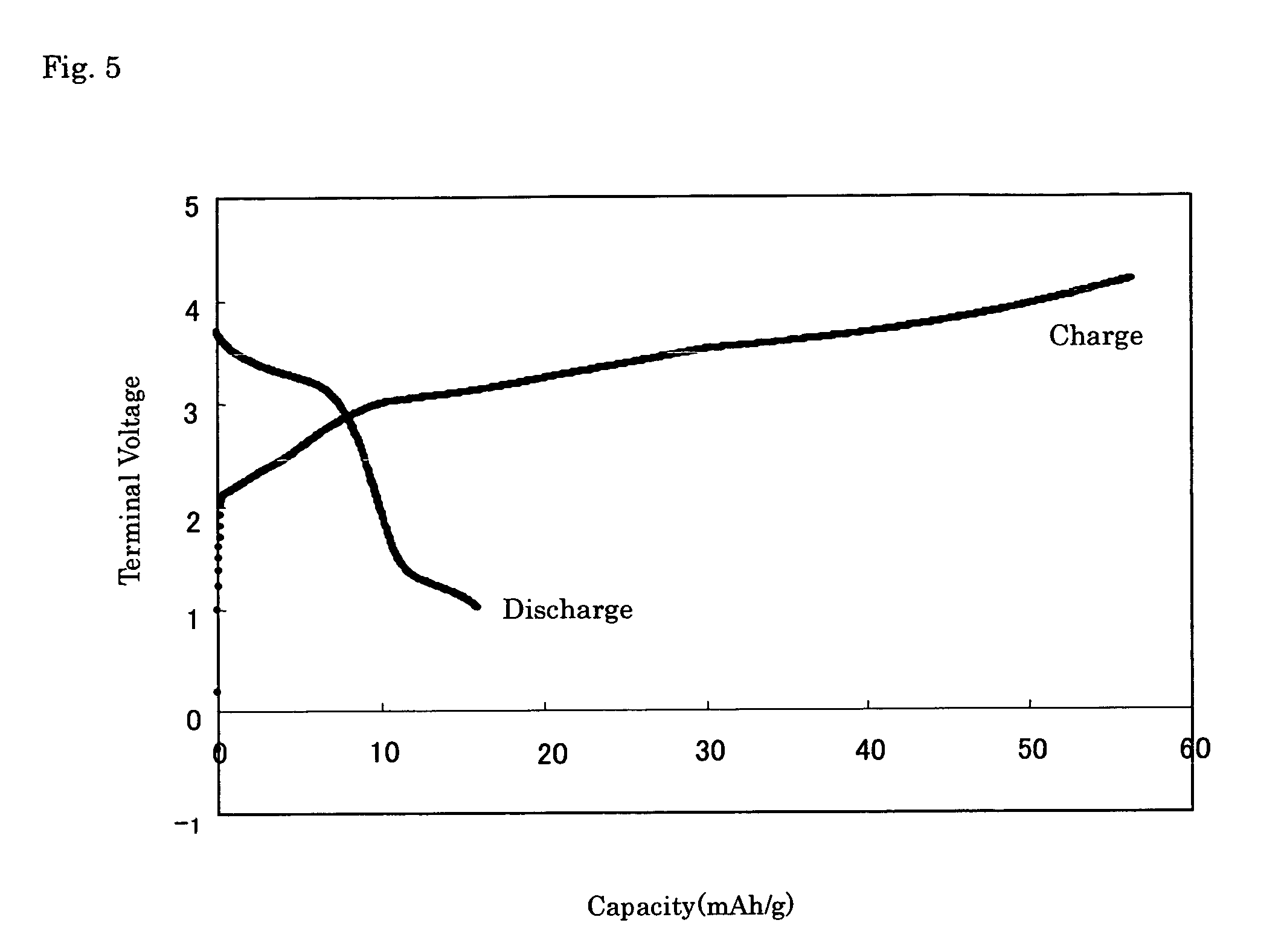High-Performance All-Solid Lithium Battery
a lithium battery, all-solid technology, applied in the direction of non-metal conductors, non-aqueous electrolyte cells, cell components, etc., can solve the problems of inability to obtain complete vitreous electrolyte, inability to achieve complete vitreous electrolyte, and inability to achieve the performance of the target battery. , to achieve the effect of high conductivity and rapid cooling
- Summary
- Abstract
- Description
- Claims
- Application Information
AI Technical Summary
Benefits of technology
Problems solved by technology
Method used
Image
Examples
reference example 1
(1) Production of Lithium Sulfide
[0149] Lithium sulfide was produced by a method according to a first embodiment (two-step method) of Patent Document 1.
[0150] To be specific, 3,326.4 g (33.6 mol) of N-methyl-2-pyrrolidone (NMP) and 287.4 g (12 mol) of lithium hydroxide were charged into a 10-L autoclave equipped with a stirring blade, and a reaction liquid was stirred at 300 rpm and heated to 130° C.
[0151] After heating, hydrogen sulfide was blown into the liquid at a supply rate of 3 liter / min for 2 hours.
[0152] Next, the reaction liquid was heated in a stream of nitrogen (200 cm3 / min) such that hydrogen sulfide was partially removed from reacted hydrogen sulfide.
[0153] Water produced as a by-product of the reaction of the hydrogen sulfide and lithium hydroxide started to evaporate with heating, and the water was condensed by a condenser and extracted out of the system.
[0154] The temperature of the reaction liquid increased with distillation of water out of the system. Heati...
reference example 2
[0163] The content of impurities in commercially available lithium sulfide (available from Sigma-Aldrich Japan K.K.) was measured.
[0164] Table 1 shows the obtained results.
TABLE 1Li2SO3Li2SO4Li2S2O3LMAB(mass %)(mass %)(mass %)(mass %)Reference0.04Example 1Reference—10.780Example 2
example 1
[0165] 0.6508 g (0.01417 mol) of high purity lithium sulfide of Reference Example 1 and 1.3492 g (0.00607 mol) of diphosphorus pentasulfide were mixed sufficiently. The mixture was introduced into a carbon-coated quartz glass tube, and the tube was sealed under vacuum.
[0166] Next, the tube was placed into a vertical reaction furnace and heated to 900° C. over 4 hours. A melt reaction was conducted at this temperature for 2 hours.
[0167] After completion of the reaction, the quartz tube was charged into ice water for rapid cooling.
[0168] The quartz tube was opened, and a powder sample of the obtained melt reaction product was subjected to X-ray diffraction measurement. As a result, peaks of lithium sulfide and diphosphorus pentasulfide disappeared, and the result confirmed that vitrification proceeded (see FIG. 1, CPS represents an X-ray reflection intensity).
[0169] An electric conductivity of the powder sample was measured by an alternating current impedance method (measurement f...
PUM
| Property | Measurement | Unit |
|---|---|---|
| reduction potential | aaaaa | aaaaa |
| reduction potential | aaaaa | aaaaa |
| temperature | aaaaa | aaaaa |
Abstract
Description
Claims
Application Information
 Login to View More
Login to View More - R&D
- Intellectual Property
- Life Sciences
- Materials
- Tech Scout
- Unparalleled Data Quality
- Higher Quality Content
- 60% Fewer Hallucinations
Browse by: Latest US Patents, China's latest patents, Technical Efficacy Thesaurus, Application Domain, Technology Topic, Popular Technical Reports.
© 2025 PatSnap. All rights reserved.Legal|Privacy policy|Modern Slavery Act Transparency Statement|Sitemap|About US| Contact US: help@patsnap.com



